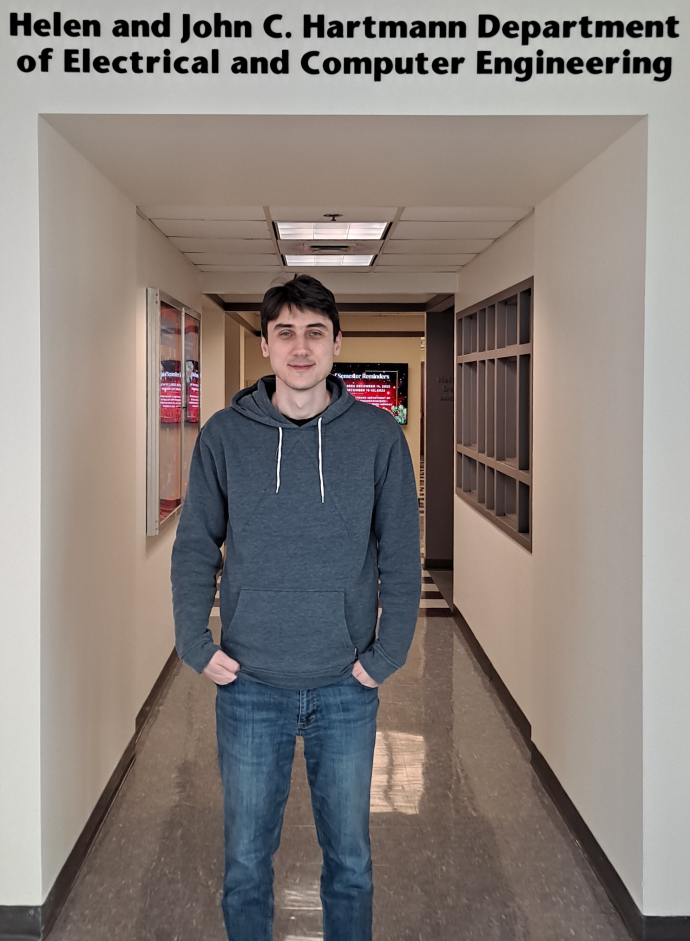Cem Benar - ECE PhD Student of the Month - December 2022

Cem Benar is a Ph.D. candidate in the Electrical and Computer Engineering department at NJIT. His doctoral research aims to develop a theoretical framework for neural networks. Neural networks have achieved great success in a wide range of applications. Most neural networks are not inherently interpretable and are created as black-box models. Their architectures are decided experimentally due to the lack of a theoretical framework. Building evidence and insights are needed to construct a theoretical framework. His team systematically analyzes the performance of a given neural network as a function of input statistics and the design parameters, which are dimension, depth, and sparsity. They explain the impacts of the design parameters on the performance to give insights into the complex relationships among performance, dimension, depth, sparsity, and input statistics. Meanwhile, they microscopically quantify the variations in the statistical properties of layer nodes in relation to the architectural changes, and we demonstrate the relationship between those variations and network performance. In summary, the goal is to uncover sophisticated relationships between performance, architecture, and statistical properties of layer representations.
What do you think would be an impactful move in your research area?
I observed that the practice goes faster than the theory in the field of neural networks. However, the number of studies attempting to theoretically explain the success of neural networks for certain applications is increasing rapidly. Many of those studies make use of established and well-known concepts and theories in various fields, such as information theory, transform coding, physics, and statistics. I believe that the relationships among performance, architectural changes, and statistical properties of layer representations should be more thoroughly investigated. Consequentially, the optimal statistical properties for the given input data statistics and application of interest can be figured out. Then, we can design and regularize the network to be learned those desired statistical properties and therefore achieve a higher level of interpretability.
What is a mesmerizing moment during your time in the ECE Department at NJIT?
I would say that the first ECE Ph.D. stories contest organized in the Fall of 2021 was one of the most mesmerizing moments during my time in the department. In the contest, the Ph.D. students in the department presented stories from their research and lives. I had a chance to learn what topics the other students were working on, meet them in person, and exchange ideas.
The campus has been re-opened for three semesters since the lockdown. Please share some experiences on adjusting to the re-opening.
Measures were taken by the university after the re-opening to prevent transmission of COVID-19 on our campus, including wearing masks in indoor spaces and COVID-19 vaccination requirements. I haven’t had any difficulties adjusting to the re-opening. The only difference for me between before and after the pandemic is that I still wear a mask, especially in campus areas of high occupancy and in times when the prevalence of diseases is high.
What's your observation of some new trends in the job market after the lockdowns?
The job market recovered rapidly after the pandemic created a significant amount of job losses. During the lockdowns, most people had to work remotely and figured out how to work efficiently from their homes. Technology, including software tools, has made working from home easier. Thus, I observe that a higher number of remote/hybrid job opportunities are open compared to the time before the pandemic. I believe the technological developments regarding digitalization/digital transformation in a wide range of industries and daily life will likely expand more. Besides, the pandemic encouraged businesses to develop sustainable and green solutions in their operations due to global warming, which may increase the costs of businesses but also creates new job opportunities and sectors. Also, the pandemic exposed the vulnerabilities of supply chains, which may encourage domestic production, especially in critical industries such as semiconductors. A significant amount of funding has been given to boost technological developments, particularly in the fields of AI, quantum computing, and semiconductors.
